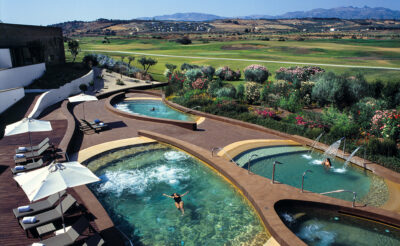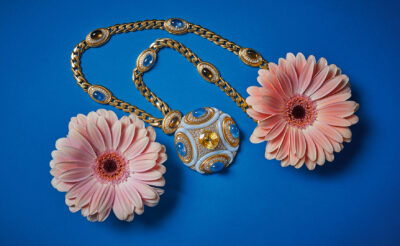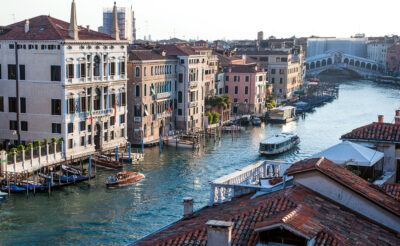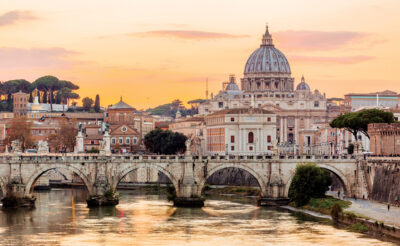There are hotels, and then there are marvels. On a flying visit to Rome this year, we were dazzled with a show-stopping hotel opening that also marked Bulgari’s return to its Italian roots
Who can deny the pleasures of the Eternal City and its spectacular Roman architecture — from baroque and renaissance to neoclassical, it’s a feast for the eyes and a city that’s made for walking (and eating, but more on that later). In less than 10 minutes you can meander from the Trevi Fountain, the almost 30-metre-high water feature that formed the backdrop to films such as La Dolce Vita, Angels and Demons and Roman Holiday, to the Pantheon, a former temple and architectural marvel with a domed ceiling measuring 43 metres in diameter (the biggest of its kind when construction was completed in 27 BC). A brisk 20 minute walk later through its fabled streets, and you’ll come face to face with the Colosseum, the largest standing amphitheatre in the world. Or, set off across the river to Vatican City (no introduction needed).
After a day spent touring and enjoying the shopping splendours of Via dei Condotti, autumn in Italy can be wearing. Thank goodness, then, for Bulgari. It’s been almost 120 years since the famed jewellery house opened its boutique at the foot of Rome’s Spanish Steps, and 19 years since stepping into the hospitality industry with their inaugural hotel in Milan (eight have since followed, including Bali, London and Dubai — but you knew that already), and Bulgari has finally returned to its roots. But what took it so long?
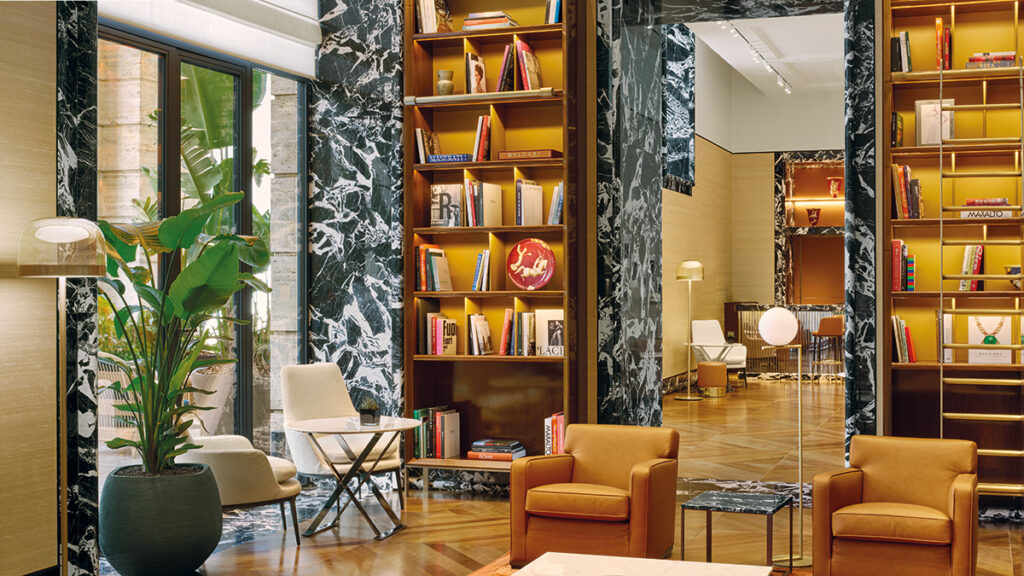
Lavish Chiampo marble and Murano glass can be found throughout the hotel, including in the hotel’s lounge
In the heart of Rome, occupying a revered position at 10 Piazza Augusto Imperatore in the Campo Marzio area, the unique and protected plot of Roman soil was not easily stumbled across. Adjacent to the Mausoleum of Augustus, the tomb dating back to the 1st century that holds the remains of the original Roman emperor, and the Ara Pacis, an altar commemorating the era of peace he imposed, waking up at Bulgari Roma and looking out upon the Mausoleum imparts a sensation of awakening in ancient Rome. “This is a project that started way back: we have waited a long time and worked for over 10 years to find a truly extraordinary location to open a hotel in the city where Bulgari was born,” said Silvio Ursini, executive vice-president of Bulgari and head of hotels and resorts. Designed by rationalist architect Vittorio Ballio Morpurgo and built in the 1930s, the building that now houses the hotel was previously the headquarters of the Italian Social Security Agency.
“The original building is very much preserved. For example, the size of the original offices are more or less the size of the rooms now. The character of the building, as it was, is absolutely safeguarded,”explains Patricia Viel, architect and CEO of ACPV Architects, the Italian firm entrusted with all the Bulgari properties. The original stairwells, windows, room sequence, entrances and towering façade stand resolute. However, even when arriving in the dead of night, it takes mere seconds to discern the familiar ambience of the Bulgari realm. Lavish Chiampo marble makes up both the floor and ceiling, delicate Murano glass chandeliers float above, and modernity finds its place through pops of burnt orange that puncture the furnishings. It’s this delicate interplay between past and present that encapsulates each Bulgari project. “We were very keen to link the atmosphere of the design to the sense of modernity that Emperor Augustus wanted for the city when he first began his reign. He was young, he was coming from abroad, he was shaped by many influences,” Viel adds.
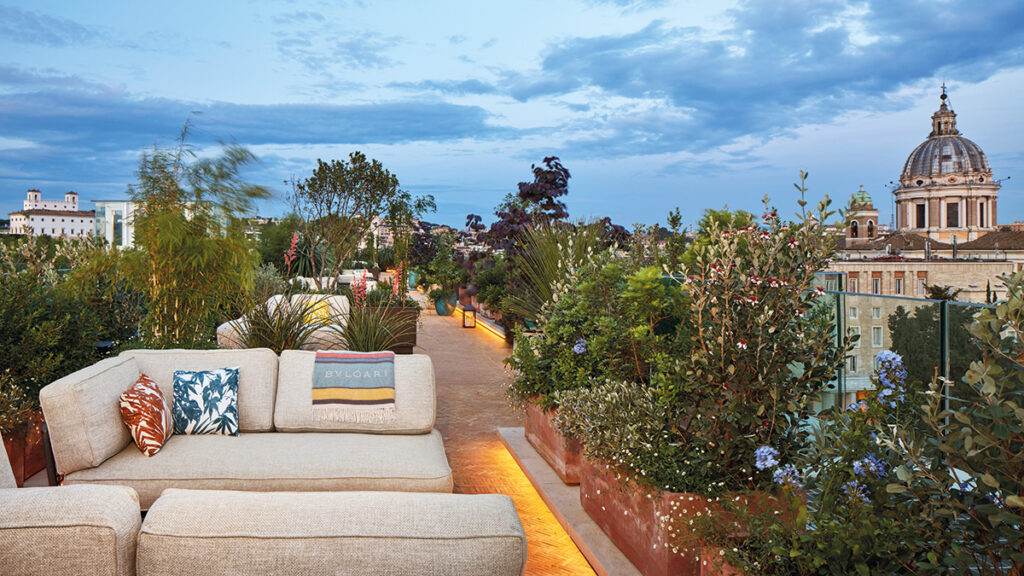
Sprawling views stretching from the Altare della Patria to Villa Medici can be enjoyed from its rooftop bar
When the young emperor came to power his vision for Rome was that it would be made from exotic marbles, showcasing both the prowess and the openness of the empire — red marbles were shipped from Africa, green marbles from the Middle East, and so on.“I found a city of bricks and left it a city of marble,” he proclaimed. It’s unsurprising, then, that the central themes of the Bulgari Roma project are marble and colour, evoking both the identity of Ancient Rome and the history of a jewellery house whose distinctive feature is gemstones. A quartet of coloured marble sets the tone in the bathrooms — each selected outside Italy, in line with Augustus’s thoughts: yellow brocatelle from Iran, green quartzite and white Taj Mahal from Brazil, and red jasper from Sudan — which then cascade into the remainder of the room’s narrative from the fabric choices for the furniture to the bedheads and the lamps. “The idea was to use marbles that reflect the fundamental colours for the jewellery, for the stones,” Viel shares.
In various spaces throughout the hotel, you’ll also come across hand-crafted marble mosaic roundels, custom textiles displaying iconic Bulgari designs, vintage Ginori trumpet vases from the 1930s and walls adorned with blown Venetian crown glass. “Bulgari has a very wise relationship with art because they don’t use it merely for decorative purposes,” Viel elaborates. “For the brand, art is a very relevant expression of human existence so every time you see something that is art, it is authentic. Some rooms feature ceramics that date back to the 1920s and have been acquired by Bulgari over the years. Even when incorporating decorative elements, they are drawn from the brand’s archives. The relationship with art is all about authenticity.” High jewels borrowed from the House’s extensive archive also decorate the corridors, (and if that’s not enough to whet your appetite, then the original Via dei Condotti Bulgari flagship is a mere 10 minute stroll away).

A bath with a view? Don’t mind if we do
While opulence plays a significant role in the design, it’s the hotel’s integration with the surrounding city and its vibrant social scene that makes it truly glamorous. Guests have the option to enter from either the North or South sides of the hotel, offering atmosphere on both the street and within the hotel’s all-day restaurant, Il Caffè, which is accessible to the public. The fifth floor terrace and restaurant, Il Ristorante, offers a more secluded setting, culminating in the rooftop that boasts panoramic views of the city stretching from the Altare della Patria to Villa Medici. “The idea was to connect the building with the city and infuse it with the city’s social life throughout its various levels, from the ground floor to the rooftop. However, we also kept in mind the essential need for our guests to have moments of privacy,” Viel adds.
Nowhere was this display of glitz and glamour more present than on the hotel’s opening night. Bulgari ambassadors Zendaya and Priyanka Chopra Jonas joined the star-studded affair, both adorned in Bulgari high jewellery. Among the attendees were stylish Italians, elegantly attired in silk two-pieces and cocktail dresses paired with either brogues or sneakers, savouring bubbles and canapés by resident Chef Niko Romito. As darkness fell, the sky transformed into a canvas of diamond-studded black, with twinkling drones orchestrating a dance above the emperor’s tomb. The crowd looked up as Bulgari’s iconic emblems, from the serpent to the eight-pointed star, littered the sky. The evening marked the House’s return to its roots and was all at once a triumph of modernism and a salute to the city’s deep history.
The Accommodation
Let’s get straight down to business: The Bulgari Suite. At 300 square metres and featuring 10 windows that each offer uninterrupted views over the Mausoleum of Augustus, this is imperial lodging at its best. Custom-made Venetian fabrics by Rubelli coat the walls and Antonio Citterio furniture is littered throughout, while an Agapecasa marble dining tables its centre stage in a dedicated dining room (situated just a stone’s throwaway from the suite’s private bar). For the master bath, a solitary block of Corchia marble is carved into a shape inspired by the Baths of Caracalla and the shower moonlights as a steam room. Additional details found in the suite such as circular lighting fixtures that mirror the shape of Augustus’s tomb, mosaic roundels and, most notably, the marble-walled bathrooms, are signature features present across all rooms from the Junior to the Premier suites. Beds are marshmallow-soft and laden in Bulgari blankets, of course.
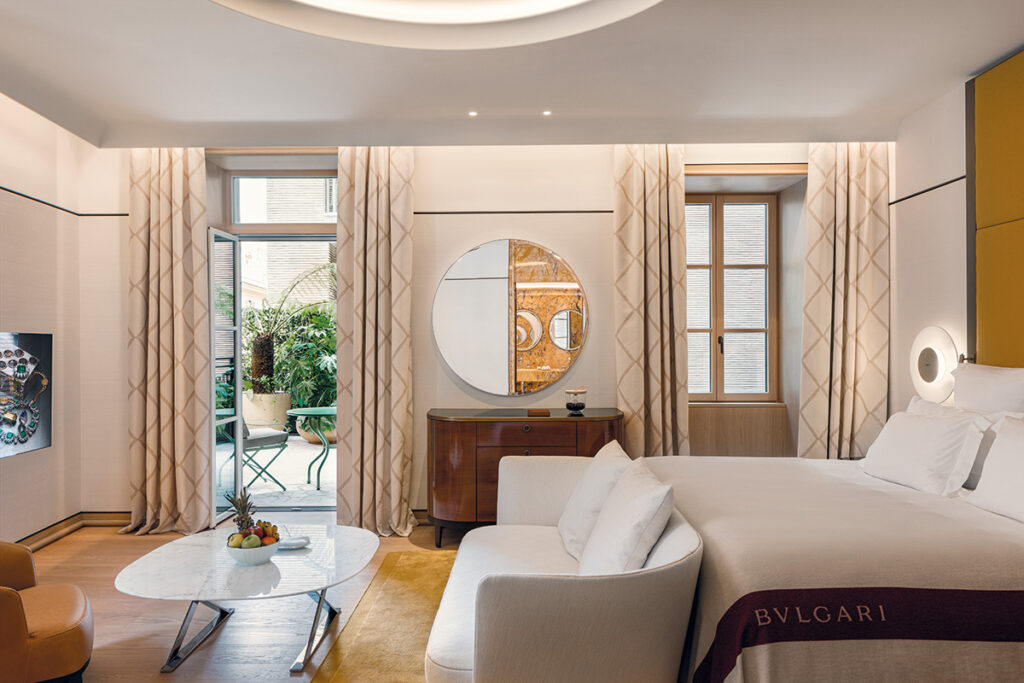
Plush Venetian fabrics ensure a cosy night’s sleep in the Bulgari Suite
The F&B
Italian chef Niko Romito takes the helm, best known for the Il Ristorante concept that already graces Bulgari’s Dubai, Milan, Tokyo, Beijing and Shanghai outposts, and for his own three-Michelin-starred restaurant, Reale, located in his native town of Castel di Sangro. In Rome, expect casual dining on the ground floor’s Il Caffè. Breakfast includes fresh pastries, pressed juices and French toast while carpaccios, focaccia and, of course, pasta are on offer come lunchtime. Upstairs, sprawling out into the fifth floor terrace, bask in the familiarity of Il Ristorante with local and seasonal dishes that are as precise as they are delectable (linguine with lobster and red prawns, and Marango beef fillet with green peppercorn are favourites). End the evening at the Bulgari bar— whether for its cocktails or simply to bask in the interior design.
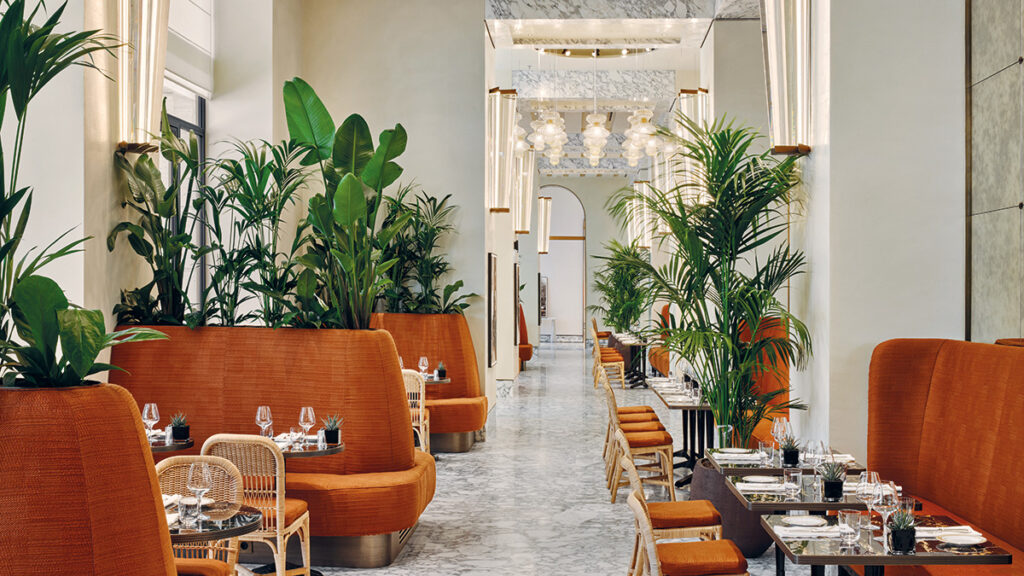
Il Caffè by Chef Niko Romito is a dreamy destination for a catch-up
The Spa
Its masterpiece is a rather spectacular Roman bath-style swimming pool shrouded in Diva’s Dream-inspired mosaics and replete with impressive marble columns rising out from the water (it holds historical significance as a protected part of the building’s structure). The eight treatment rooms are home to full or half-day rituals, or hour-long massages and facials including light therapy and targeted body treatments. Augustinus Bader is the beauty brand of choice.
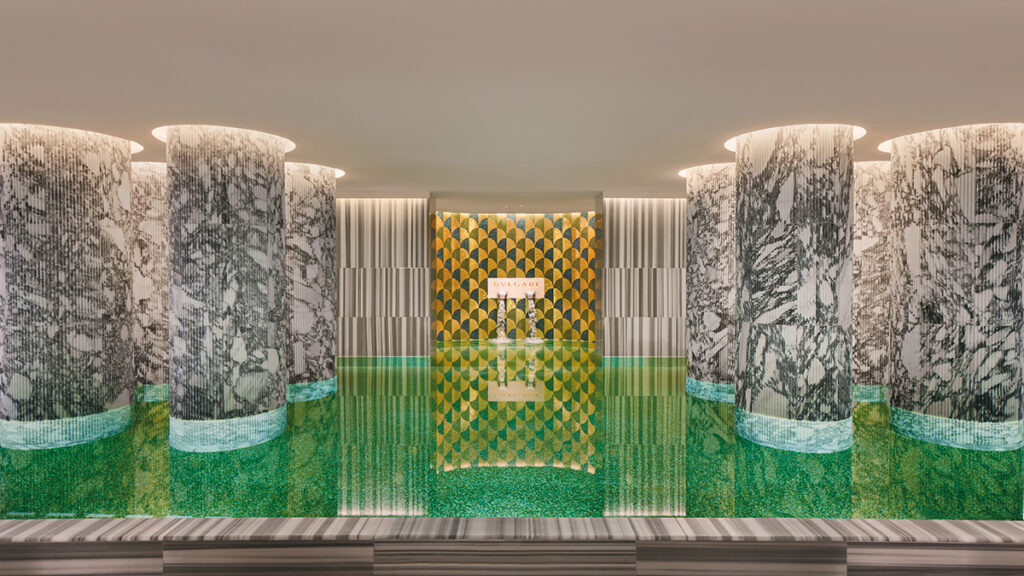
The pool boasts marble columns and mosaic walls and stands as one of the building’s listed areas
The Art
The hotel is as much about art as it is for the arts. The ground floor library invites scholars, students and city dwellers alike to enjoy its expansive collection of tomes citing the Eternal City’s storied relationship with art and architecture, (the towering bookshelves originally designed in the 1950s by Albini for Cassina, are themselves a talking point). However, from the library to the high jewellery lining the corridors, and the prized materials and extraordinary craftsmanship that anchor the entire space, there’s one creation that stands preeminent: the original sculpture of Emperor Caesar Augustus that fills the entrance vestibule. The stoic piece is on loan from the Torlonia Foundation, whose collection, as it turns out, Bulgari is helping to restore. An endeavour that underlines the hotel’s commitment to preserving the very heritage it celebrate.
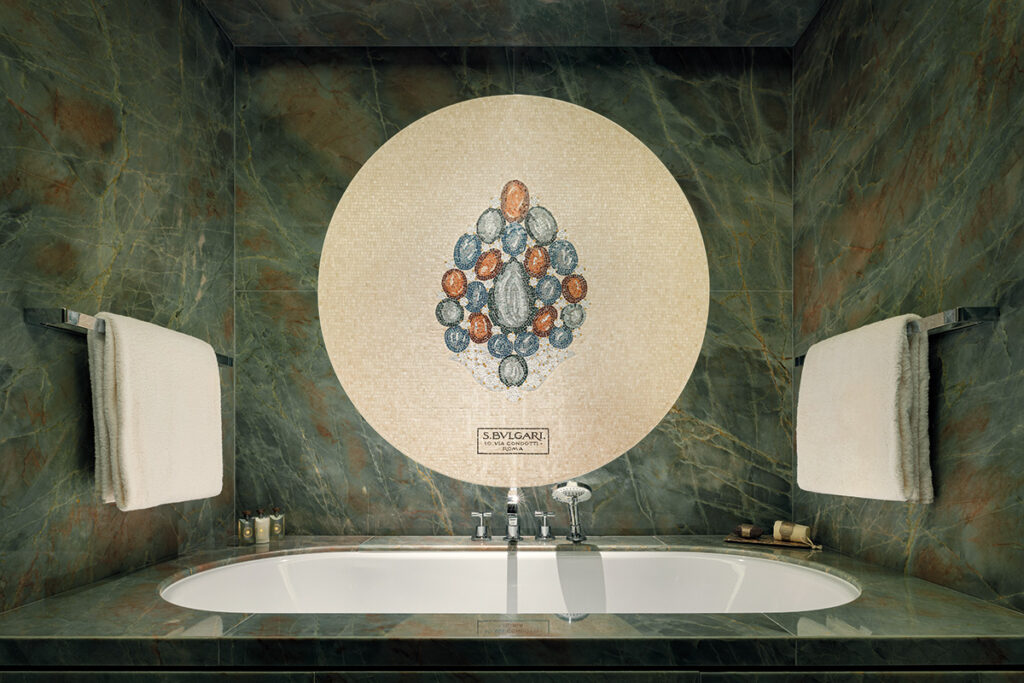
A quartet of coloured marble from around the world sets the tone in each bathroom and nods towards Emperor Augustus’s reign
The Fashion
We saw plenty of Italian brands, from Max Mara and Fendi to La DoubleJ and Marco De Vincenzo. Silk two-pieces teamed with a comfortable pair of Tod’s or Santoni loafers are as fabulous over breakfast as they are practical come city-touring. Meanwhile, floor-sweeping kaftans adorned in rich prints and sleek cocktail dresses featuring daring cut-outs raise the bar come nightfall. As for accessories… Must we spell it out? Book now
Read Next: Dubai Restaurants Are Coming Together To Raise Funds For Gaza
